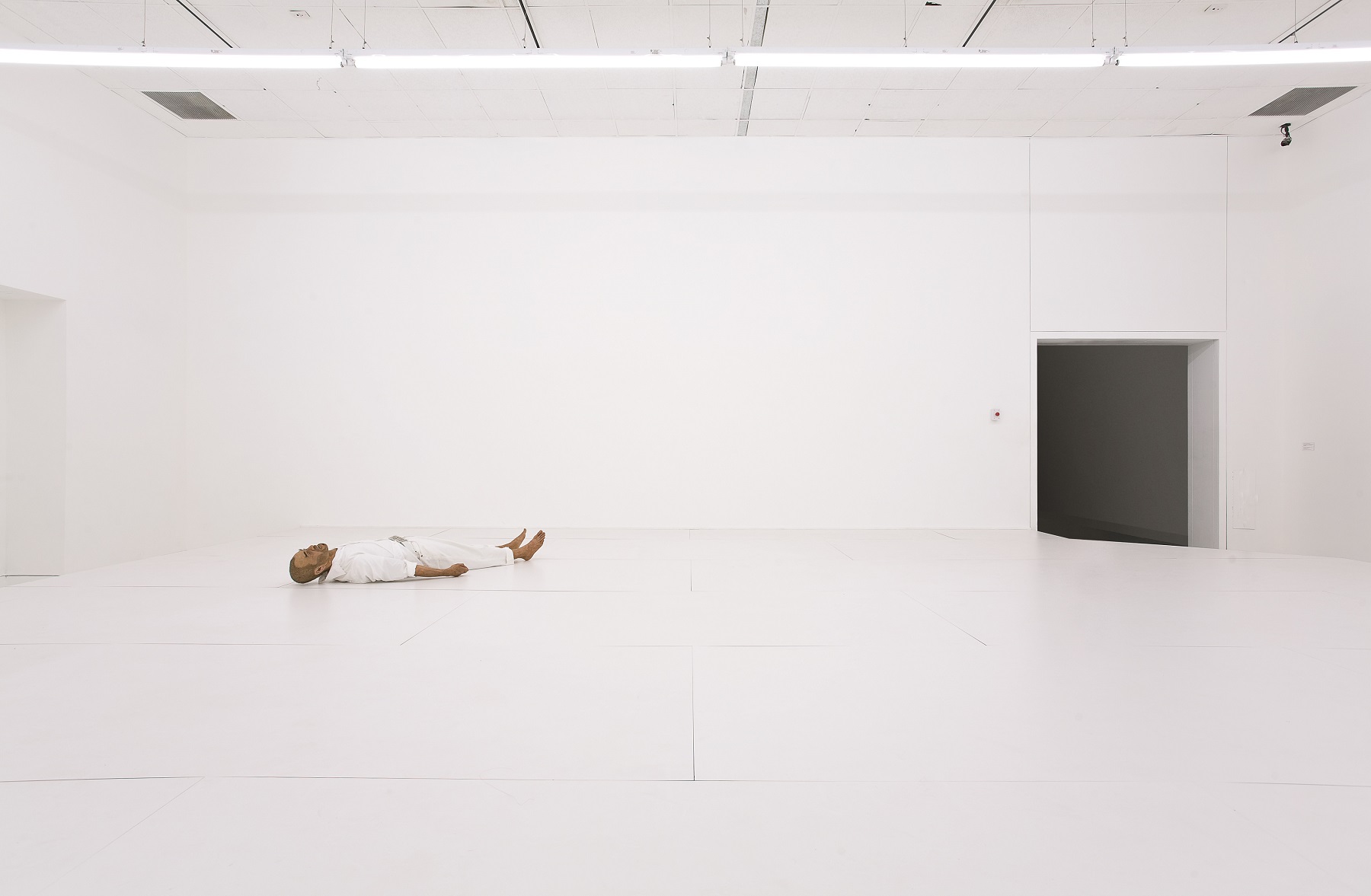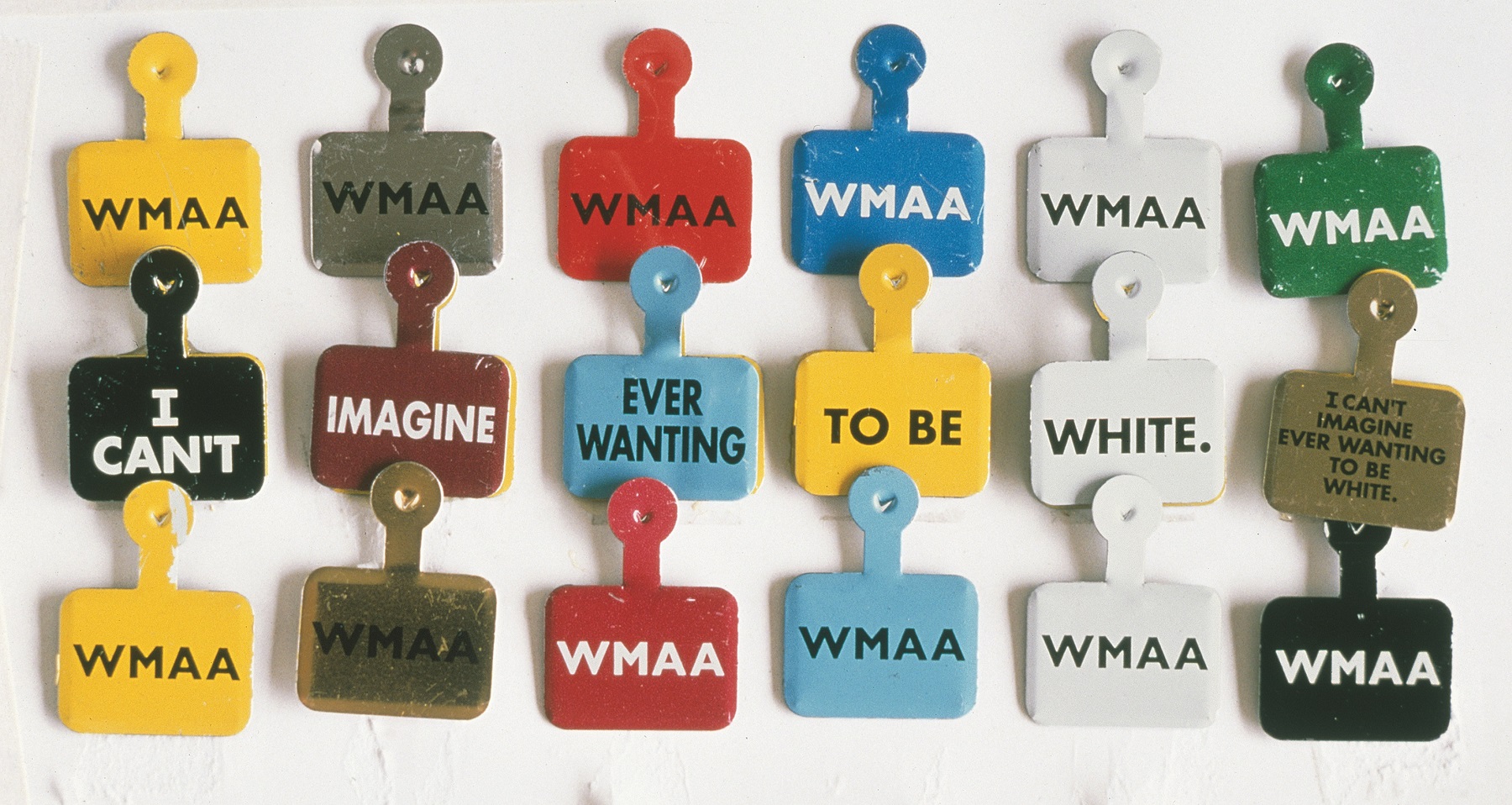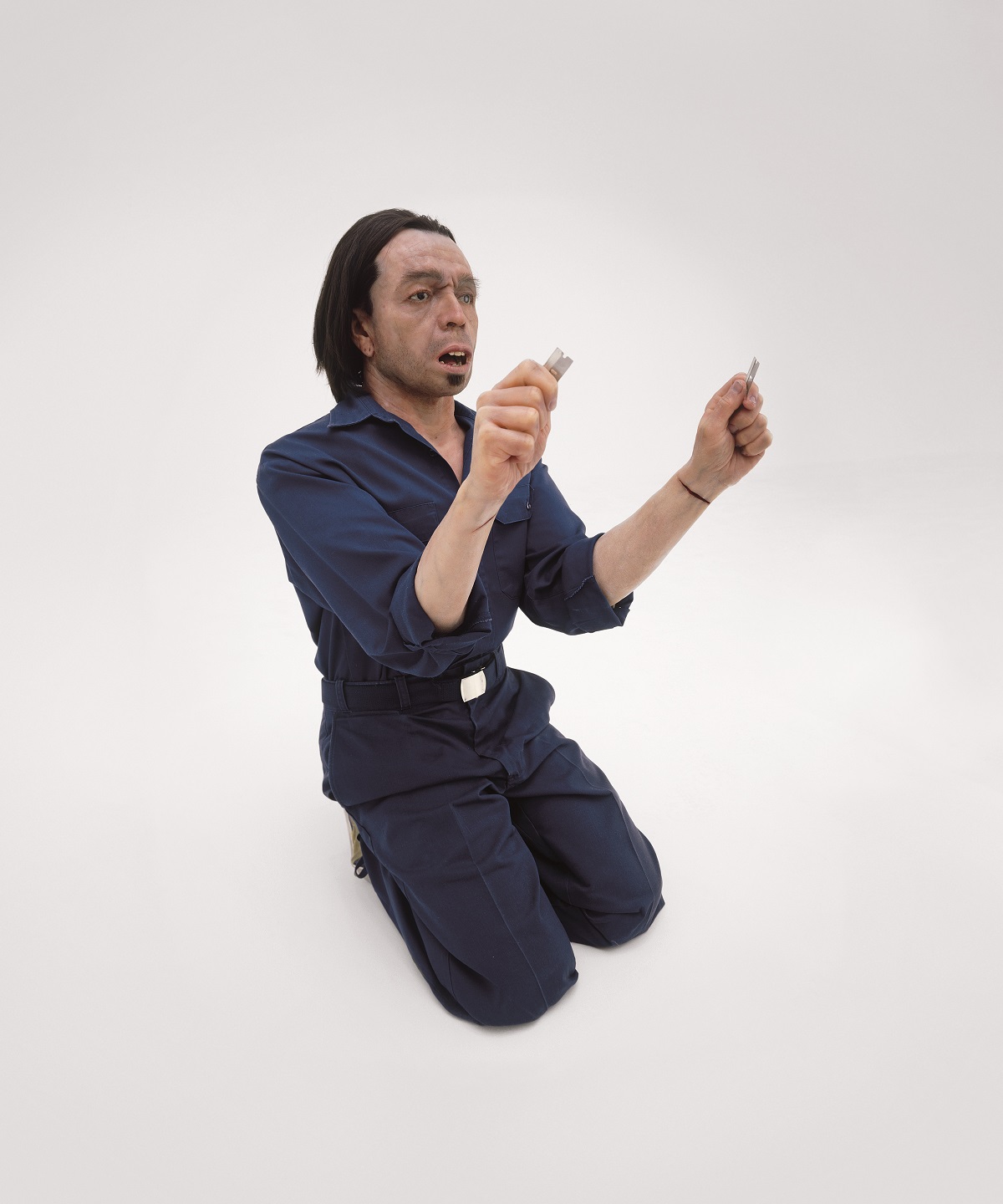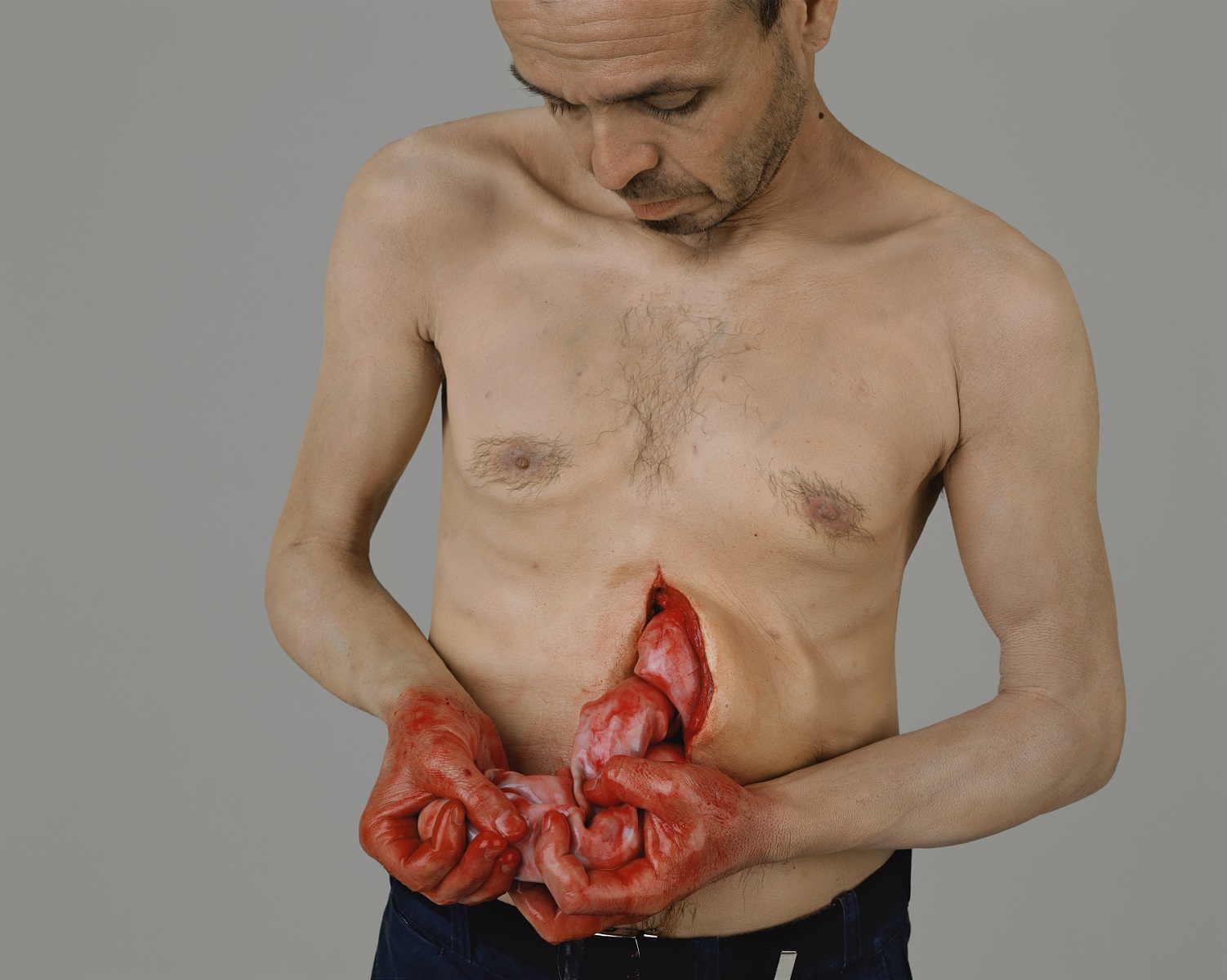A conversation between Matthew Stromberg and Daniel Joseph Martinez about the multiplicity of art and its ability to overturn specific contexts.

Daniel Joseph Martinez has no style. Or rather he has no signature style. It would be unlikely for a viewer to walk into a gallery or museum and proclaim upon seeing a work of his for the first time: “That is a Daniel Joseph Martinez”—as they might with a Rothko, a Warhol, or a Judd—based solely on its resemblance to his other works. The common thread throughout his oeuvre is not aesthetic, but conceptual. His works are unified not by how they look, but by what they do, and what they do is provoke. He challenges viewers not only to untangle his complex web of literary, artistic, and historical references, but also to consider their own relationship to the works, the artistic institutions in which they are situated, as well as culture at large. To this end, he employs a wide range of media and processes, from photography to text-based work, architectural constructions to animatronic robots. Lowbrow sci-fi, Nietzsche, Martha Stewart, Herman Melville, reductive minimalism, and the Black Panther Party are among the wide range of cultural touchstones that he draws from, often in the same work.
Our discussion avoided the literal connotations of smuggling—which in Los Angeles is often concerned with the US-Mexico border— and instead focused on the ways in which his work, in all its forms, traffics in ideas and subjects that subvert hegemonic narratives, often taking aim at the very institutions that make his work possible. The following conversation has been edited for length and clarity.

Matthew Stromberg: So we ostensibly are talking about smuggling. There’s a very literal interpretation, which is illicitly moving goods, people, or drugs over borders. But then there’s kind of a more abstract notion of smuggling, which is moving ideas, or in some way subverting hegemonic structures. After I read Juli Carson’s essay “A Scaffolding of Viral Signifiers,” in which she notes that your “corpus is less humanoid than it is viral—an ‘organism’ whose indigenous ‘inside’ is given enduring life by an ‘outside’ agent,” the first thing I thought of was your tags from the 1993 Whitney Biennial. How do those function as a virus, or as a subversive element in some way?
Daniel Joseph Martinez: We were at the height of the culture wars in 1993. There was a kind of a swelling euphoria that, by the time the 90s came, we—meaning the kind of people who were on the cutting edge of culture production—recognized that there was an all-out assault taking place in this country, and that the only thing to do was resist. You did not just resist as a defensive posture, but you resisted in an offensive way. There was a sense that we were actually winning the war, which you have to imagine was extraordinary.
Thanks to Thelma Golden and Elisabeth Sussman, who smuggled a multi-platform discourse that was inclusive in every way possible into the Biennial, the exhibition was an actual portrait of the constituents of artists in the United States. For the first time in its entire history, the Biennial was overwhelmingly plural.
In a sense, they set up the possibility for an infection by establishing a position that opened a wound, allowing for viruses to enter into the museum. The viruses were both essentially people and ideas, but in the form of artworks. It seemed to me that the greatest degree of efficacy that I could achieve would be to subvert the institution itself, to use preexisting infrastructure, which, in the case of this work, was the Whitney admission tags that the museum uses everyday. So if the curators allowed artists to intervene in the museum, my intervention was to intervene into their intervention. So it was a double entendre in terms of how one moves structurally.
I used the exact same tags and replaced the museum initials with a small phrase: “I can’t imagine ever wanting to be white.” Each tag had a portion of the phrase on it, and the idea itself, as Juli suggested, became viral—not only because the piece was activated by visitors to the museum, who in turn became the actual work of art as participants in a performance, but also because you would see people wearing the tags all over Manhattan, and you would find them on the street, blocks and blocks away. Like a virus, it completely changed the identity of the museum by calling into question a very constructed notion of identity through an interrogation of ethnic specificity.
So what is whiteness? We don’t know. White is a construction. There is no such thing as white.


MS: We know what it’s not.
DJM: That’s a very good point. We know what white is not, right? And so, by calling attention to it, we get to challenge the premise of these positions that are culturally held by our institutions. Why would a museum only exhibit and have white artists? What does that mean and how do we start to think about that? Almost 30 years later, the museum will still claim that the work changed its identity, that the ’93 Biennial, and the tags themselves, became a new aspiration. It understood that it could no longer operate its organization on the same premises it had previously—the kind of cultural hierarchies that we had inherited—and that it had to be challenged and changed in order to be actually reflective of the artists that were making work in this country. It seems to me that the result of that virus was a mutation, which the museum needed in order to recognize what it was previously unable to see.
The mutation’s result was a new form of consciousness in the museum. I’m not suggesting that the museum was overtly opposed to trying to include all the different kinds of artists in this country, but at that point they did not have the self-consciousness to realize they were not fulfilling their mandate. Behavior needed to change in order for the museum to be more reflective of who exists in this country. And it did change with this exhibition and with this work of art because they called attention to the fact that a discourse was being removed, eliminated, stripped of value or any kind of representation. The piece simultaneously triggered two types of responses; the positive one came from minority artists who immediately understood the multiplicity of the work’s meaning and its proposal to complicate the subjects of race and power. On the other hand, the negative, venomous response came from white people and hundreds of articles that called me racist. For a very long time, I was basically publicly lynched, crucified, tarred and feathered because of the audacity of an artwork that dared to declare its conceptual and intellectual independence, based on linguistic predecessors, performance parameters, and the history of art that it drew upon. It wasn’t just some random provocative statement that was thrown out, it was actually rooted in the very essence of philosophy and art history. It was not and did not pretend to be passive.

MS: Do you think part of the issue was that you enlisted viewers? The title of the piece is Overture with Hired Audience Members. You’re enlisting the audience, not as spectators, but as agents to smuggle these ideas outside of the museum. Whereas if you had just done a painting, it probably wouldn’t have been as incendiary, right?
DJM: No, of course not. The work is an indictment, including of myself. So my position, culturally speaking, is not as if I’m standing on a hierarchy looking down, suggesting that I myself am not involved in the same critique. I’m critiquing myself as much as I am critiquing anyone else. Not only did the tags unleash a virus into the museum hierarchy itself, but they also moved like a firestorm in culture.
MS: I want to speak about cyborgs, androids, and doppelgängers in your work. Once they become sentient and deviate from the order that’s been prescribed to them, they become illicit beings. In her essay on your work, Rachel Leah Baum notes that you are “counterfeiting the self-contained body of the artist.”[1] Counterfeiting is the flipside of smuggling, right? Instead of covertly transporting something real or something legitimate, you introduce something fake.
DJM: I grew up here in LA and when I was a little boy it was a big treat to go to Disneyland. I have two stories about Disneyland that lead into this trajectory.
The first one was going to Disneyland and seeing Abraham Lincoln. I was six or seven years old and I couldn’t figure it out. Abraham Lincoln was on display, sitting in a chair, and he stands up, takes off his hat and recites the Gettysburg Address. I was truly astonished: “How can Abraham Lincoln be alive?” A question that my dad answered with, “It’s a machine.” I just thought this was the most extraordinary thing I’d ever seen. It was unbelievable to see a machine acting as a person in front of you. What does that mean? What does it mean to re-animate life?
When I was eight years old I went back to Disneyland. They have the light parade at night and from the top of the Matterhorn, Tinkerbell would appear and fly down to the ground. This was a woman in costume with wings, a trapeze artist who would float down on a wire. An extraordinary illusion! So I’m there and she’s flying down, and boom, the cable breaks. She just smacked on the concrete right in front of me while my parents are trying to cover my eyes. Tinkerbell died in front of me when I was eight years old.
The juxtaposition between these two experiences for me was really profound in trying to understand what was real, to rethink normative notions of reality and representations of that reality. Later, when I became clear about these experiences, it made perfect sense to me, especially with Ridley Scott’s suggestions that such things as replicas, androids, or machines could exist. That was the beginning of my own exploration into creating doppelgängers of myself that were based on historic or literary figures.

One of the very first ones was based on the life of Yukio Mishima, a very important author for me and probably one of the greatest writers of Japan in the last 300 years of Japanese literature. At 40 years old, this guy decides he’s done. He felt his notion of patriotism and Japanese identity was in jeopardy, so he created his own small paramilitary group, an idea he couldn’t sell. He then performed the ritual of seppuku, committing suicide at 45. There’s something epic about Mishima. With the work To Make a Blind Man Murder for the Things He’s Seen (Happiness is Over-rated) (2012), I created a doppelgänger of myself that sat in a completely white room. The room looked like something out of science fiction, which I had grown up with my whole life. The figure dressed all in blue is attempting to cut his own wrists, but he’s unable to go through with the suicide because it goes against his own programming.
Disneyland spent like a whopping million dollars on producing the Lincoln robot, probably like 10 or 15 million dollars today. My challenge was to do a poor man’s version of animatronics with scotch tape, glue, and string. I didn’t have money or access to advanced technology, so I had to learn myself and find some people with expertise to cobble it together. The outcome is a kind of dysfunctional machine, which is never going to completely work correctly. The dysfunction of the machine’s technology led me to the dysfunction of the programming itself. In my piece, there was a more abject notion of my own body. The recognition of my own dysfunction or of my own systemic diseases is coupled with the social recognition of the diseases that affect the greater society at large, which are the themes played out in Blade Runner, for example. The same themes I experienced when I was very young are coupled with my political understanding and my upbringing.
In 2006, I represented the United States in the Cairo Biennial with a sculptural installation titled Call Me Ishmael, The Fully Enlightened Earth Radiates Disaster Triumphant. I placed an animatronic doppelgänger of myself on the floor, which is having an epileptic fit. By the end of the exhibition, the machine has pounded on the ground so hard that it destroys itself. By the end of the exhibition, the machine had pounded on the ground so hard that it destroyed itself. It was a very complex choreographed narrative achieved by hijacking a sophisticated music program and applying it to the physical movements of the body.

In Cairo, people told me they thought that it was a scene of the transition of a mortal on earth to heaven. They would pray around this thing. Extraordinary cultural things happened. Somebody “murdered” me. They jumped on my doppelgänger’s chest, put their thumbs into my eyes and gouged them out, cracked my neck, and tried to rip my head off and crush my rib cage. Cairo at that point was very volatile. Nonetheless, they called me on the phone and asked me to go and fix it so that it could live again. While some people were in awe of it, there were obviously people who felt it was blasphemous, which is why he was murdered.
Narratives are wrapped into the work itself. The layers of meaning do not have to make themselves readily available to any one viewer at any one moment. There’s the art itself and then there’s the experience of the art: the contemplation of the meaning of the work, its relationship to your own life and to other works of art. There’s also a relationship to its cultural specificity depending on where it is produced and where it is exhibited.
All of a sudden these layers mean something, so the title triggers one reading, and the works triggers a different interpretation. These can operate separately or they can operate in tandem to create more meaning. If one wants to think about Ishmael outside of Moby Dick, for example, why did Herman Melville use names from the Middle East in a story about a critique of US American imperialism? How does Ishmael, a Middle Eastern name, arrive as the main character in Moby Dick’s story?
There are all kinds of theories about this, but essentially Melville predicted the war in the Middle East. He carried the story of US American imperialism way ahead of his time, the same way someone like Jules Verne who, at the turn of the last century, predicted everything before it ever existed: going to space, traveling around the moon, going to the center of the earth, under water exploration. All these examples are narratives embedded inside of each other. The critique is never the critique on the front end. The subversion is the smuggling of ideas. It is reflective like a hall of mirrors. You show somebody one thing and you act in a different way. You counterfeit the idea. The doppelganger (the clone) is a counterfeit. It’s the unreal and the uncanny. It is abject by its very nature. It’s a machine that has been cobbled together not unlike Frankenstein who was put together with a bad brain.

MS: Which is the ultimate act of smuggling: grave robbing.
DJM: That’s right. On the machine level you do the same thing. You grab the parts that you can and you make the best machine out of it, a counterfeit of a human being. The question then is, how does that representation challenge other representations of human beings? Why are we legitimate and other forms of life are not? The notion that human beings are the most sophisticated being in the galaxy is really absurd. It borders on lunacy. But the question remains what does it mean to be human in the twenty-first century?
MS: The thing is, whoever is telling the story legitimizes it. When the singularity happens, and we get taken over by robots, we’ll be a footnote.
DJM: Absolutely. All these representations: Blade Runner, Terminator, The Matrix are perfect examples. And then you get to Kurzweil and the singularity: the moment a machine has sentience and we’re obsolete. So we either figure out biomechanical collaborations, or we will just become obsolete. They will no longer need a biological organism in their world. This challenges the notion of the supremacy of the human being and it points out very clearly and articulately all of our weaknesses. Think about it, we are barely out of caves, so the critique is then the critique of the species.
In Kill Bill Vol. 1, there’s a moment when David Carradine is talking to Uma Thurman about the mythology of comic books, about what superheroes are. All the different superheroes have to put on costumes in order to gain their superpowers. They are not actually superheroes. But Superman came from another planet. He came here as a baby and he disguises himself as Clark Kent in order to fit in, to disguise his superpowers. Superman’s image of the human species is Clark Kent: dumb, shy, uncoordinated, kind of a fumbling buffoon. His critique of the human race is Clark Kent. That critique is embedded in all of what we’re talking about, embedded in Ishmael, embodied in my Mishima. In all the works there is an analysis and a critique of who we are as a species. Through this analysis I’m able to get to the subtext of all the other issues that we seem to be occupied by: slavery, war and racism, the dissemination of hegemonic power, and all the tropes of a progressive society. The critique lies there.









Comments
There are no coments available.